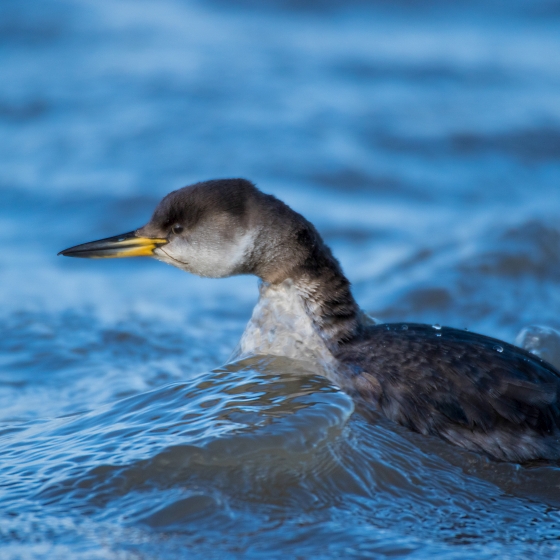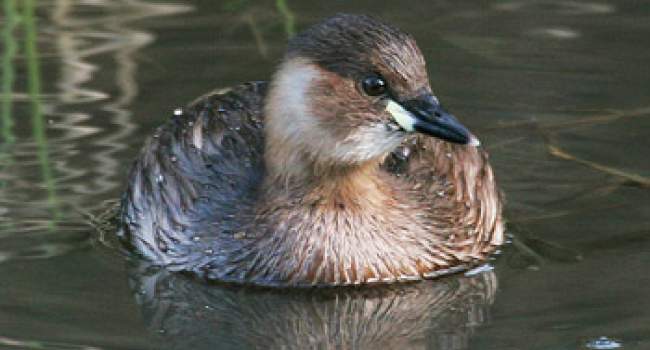Red-necked Grebe
Podiceps grisegena (Boddaert, 1783)
RX
 RENGR
RENGR  100
100

Family: Podicipediformes > Podicipedidae

This medium-sized grebe is a scarce winter visitor, mainly to the coasts of eastern Scotland, and eastern and southern England.
Difficult to see for the casual observer, Red-necked Grebes are found in very small numbers on the sea from October to March. In winter plumage they can be tricky to separate from their larger cousin, the Great Crested Grebe, being mainly shades of grey, although the short, thick neck is a good feature.
Atlas data suggest a wintering population of around 50–60 birds is present in most years. Breeding attempts by this predominantly European species are sporadic and very rare, which is a shame as the lovely rufous neck and black and white face make this a striking bird in breeding plumage.
Identification
Red-necked Grebe identification is sometimes difficult. The following article may help when identifying Red-necked Grebe.
Identifying winter Grebes

From Great Crested and Red-necked to Slavonian and Black-necked, separating grebes in winter plumage can be challenging. This identification video from the BTO discusses all the features to help identify them with confidence.
SONGS AND CALLS
Listen to example recordings of the main vocalisations of Red-necked Grebe, provided by xeno-canto contributors.
Song
Develop your bird ID skills with our training courses
Our interactive online courses are a great way to develop your bird identification skills, whether you're new to the hobby or a competent birder looking to hone your abilities.
Browse training coursesStatus and Trends
Population size and trends and patterns of distribution based on BTO surveys and atlases with data collected by BTO volunteers.
CONSERVATION STATUS
This species can be found on the following statutory and conservation listings and schedules.
DISTRIBUTION
In winter, Red-necked Grebes can mostly be found along North Sea coasts from Angus to Kent, along the south coast of England, and at scattered at inland sites, mainly in eastern England. They occasionally attempt to breed but most summer records are of single individuals.
Occupied 10-km squares in UK
| No. occupied in breeding season | 2 |
| % occupied in breeding season | 0.07 |
| No. occupied in winter | 242 |
| % occupied in winter | 8 |
European Distribution Map
DISTRIBUTION CHANGE
| % change in range in winter (1981–84 to 2007–11) | +7.4% |
SEASONALITY
Red-necked Grebe are mostly scarce winter visitors, present from early autumn through to late winter and early spring; odd individuals summer in some years.

Movement
Information about movement and migration based on online bird portals (e.g. BirdTrack), Ringing schemes and tracking studies.
RINGING RECOVERIES
View a summary of recoveries in the Online Ringing Report.
Biology
Lifecycle and body size information about Red-necked Grebe, including statistics on nesting, eggs and lifespan based on BTO ringing and nest recording data.
SURVIVAL & LONGEVITY
View number ringed each year in the Online Ringing Report
Adult Survival 
|
0.8  
|
CODES & CLASSIFICATION
Ring size 
|
G |
Field Codes 
|
2-letter: RX | 5-letter code: RENGR | Euring: 100 |
For information in another language (where available) click on a linked name
Would you like to search for another species?









Share this page